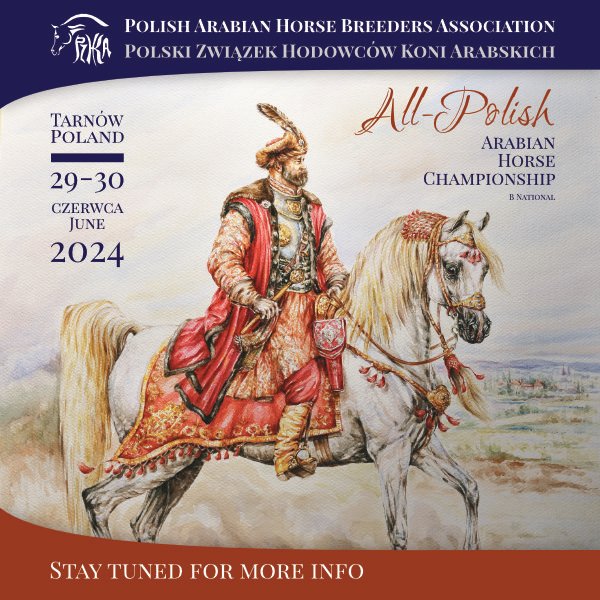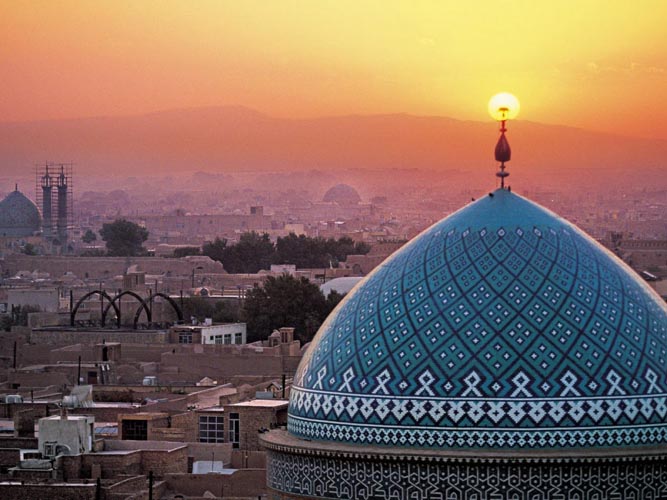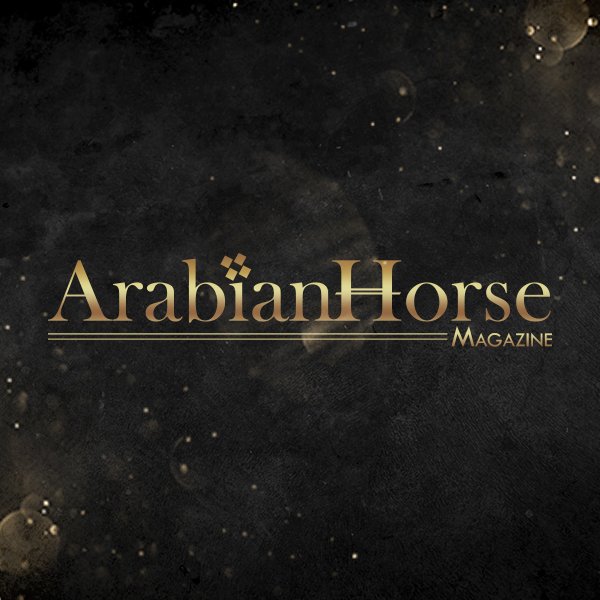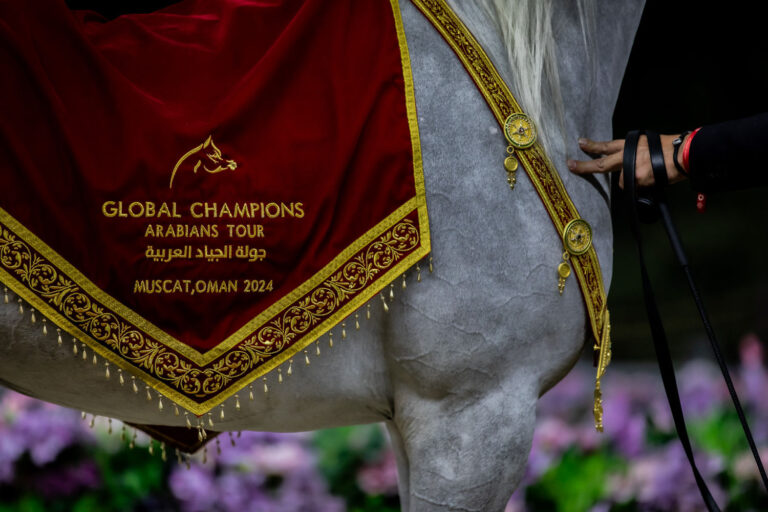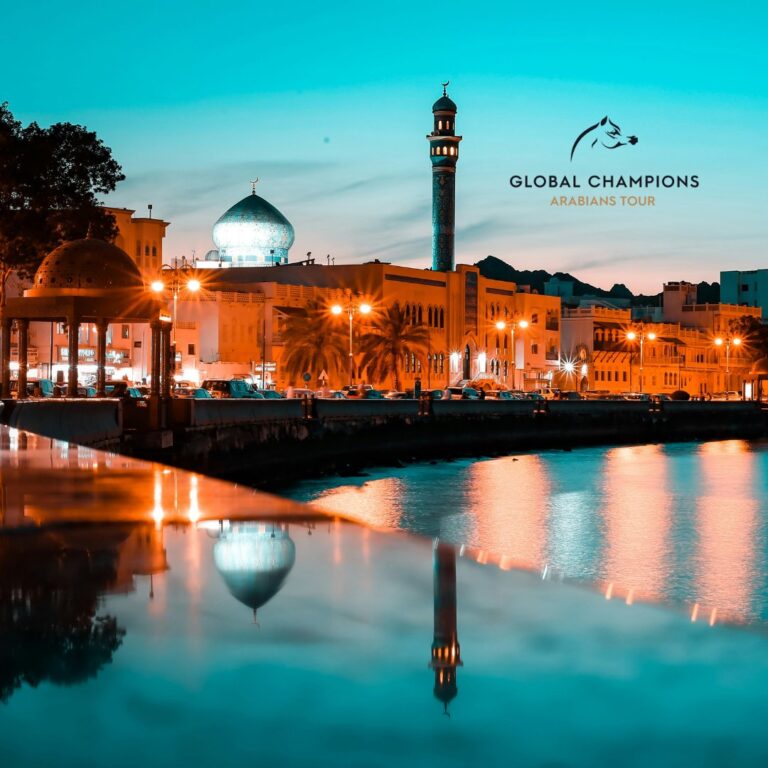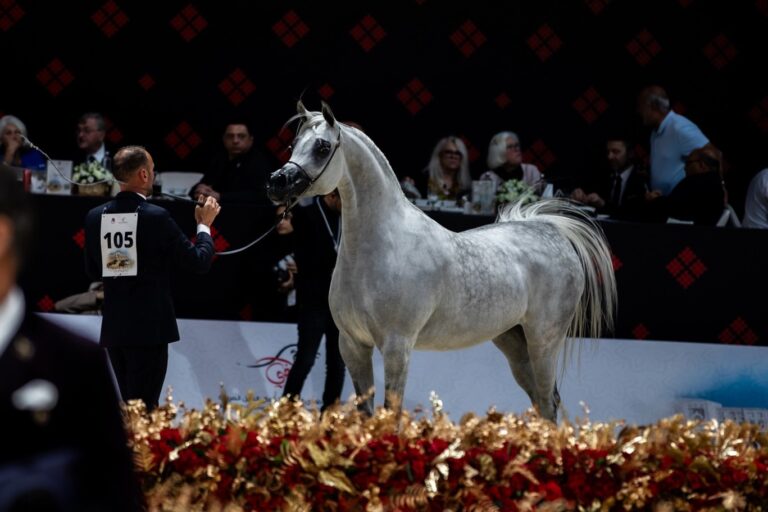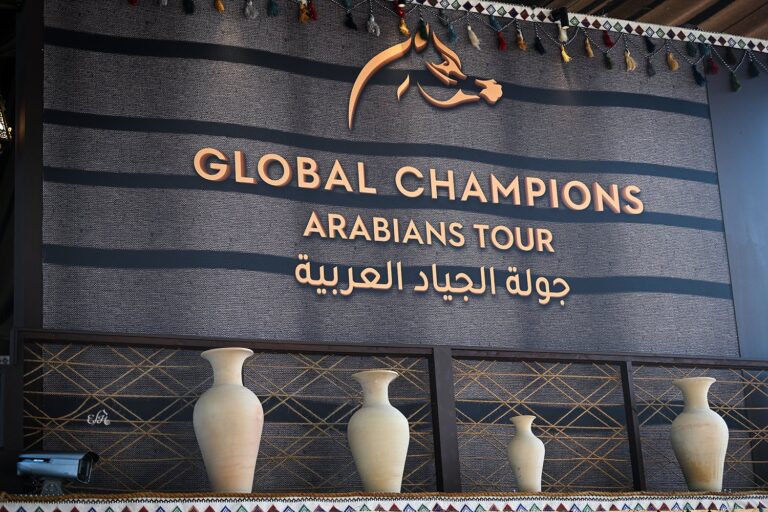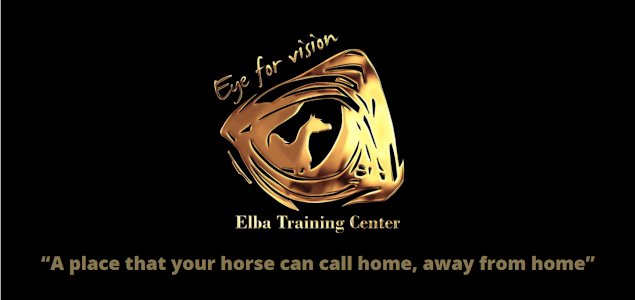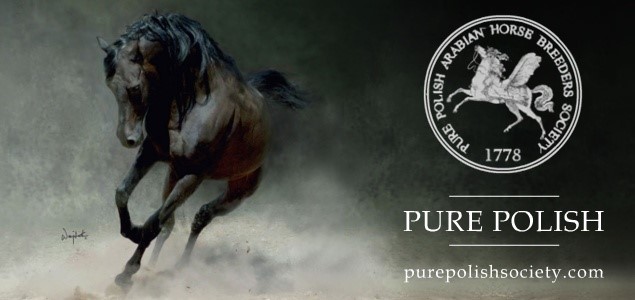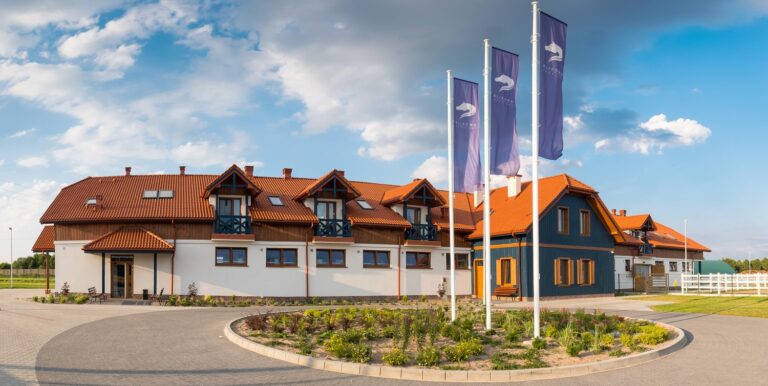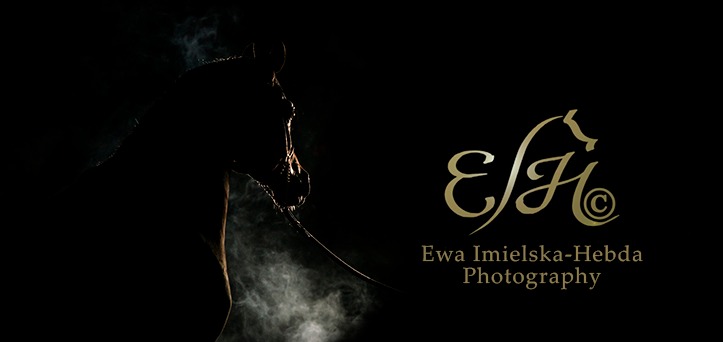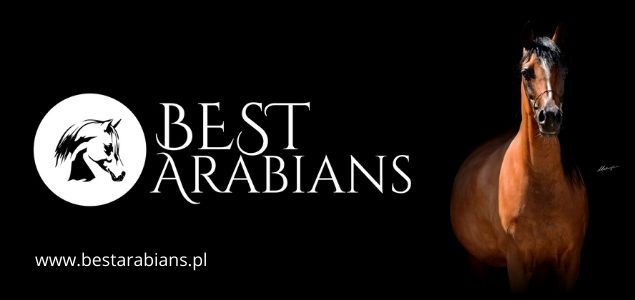
Iran is first and foremost people, with a positive attitude towards foreigners, welcoming everyone with „Khosh amadin!”. A country sometimes seen in a negative way, most often misunderstood, about which there are many stereotypes circulating around. To me Iran is like the hand-made rugs woven by the country’s citizens. It is a complex country, subtle and colorful, encouraging one to travel and discover the rich culture, numerous historic monuments, ruins of ancient Persia, various landscapes, as well as summer resorts on the Caspian Sea and winter resorts in the mountains surrounding Teheran. No wonder that this country, „wise with its poetry, history, amicable people, unique hospitality” – as written by Polish radio and television reporter, as well as schooled Iran expert Artur Orzech in his book „A visa to Iran” (2014), draws more and more tourists from Europe each year.
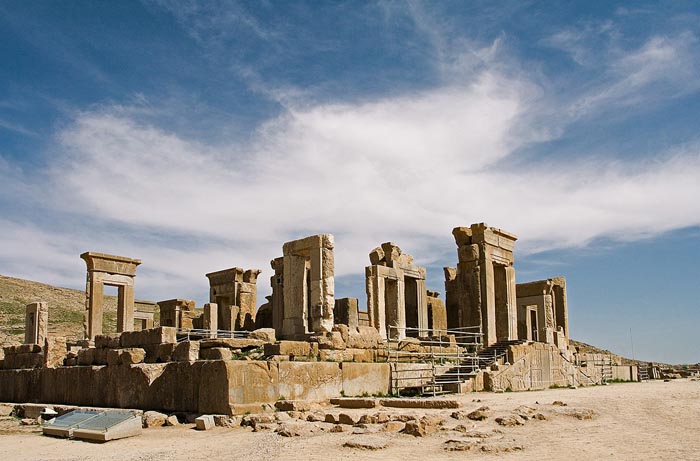
The lands of today’s Iran, as a result of historic turmoil, frequently changed rulers. They were under the reign of Arabs, Mongols and Turks. However the memory of three thousand years of civilization of Persian rulers, whose spirit can still be felt in the famous Persepolis or Fars, has not been lost. „The Middle East is actually the initial birthplace of our civilization. It is from here that the currently largest religions and valuable elements of modern world culture take root”, we read in Orzech’s book. Iran is desert cities, among them Yazd with the Zoroastrian Fire Temple, where priests have unceasingly maintained the sacred fire for more than 1100 years. Iran is Isfahan, an architectural pearl with „shaking” minarets, the Imam Khomeini Square and the largest in Iran Friday Mosque. We are drawn to Iran by the culture of the Orient, but also the kindness of the people, whose hospitality has no equal. It is worth succumbing to their spell, just as it is worth to haggle over a Persian rug, listen to a declamation of Persian poetry to the traditional music
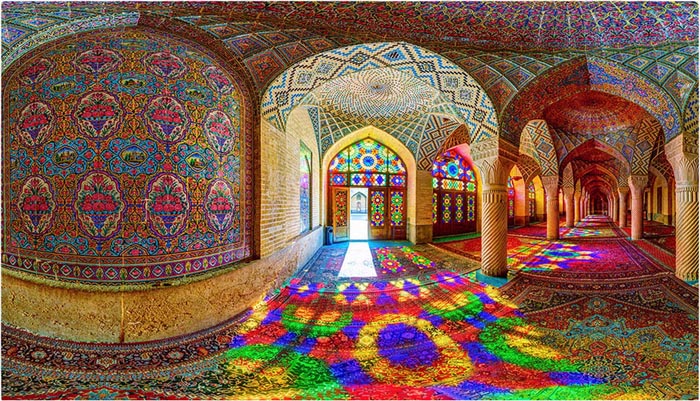
accompaniment, drink chai tea in one of the numerous teashops (chaykhane), smoke a water pipe (ghelyuon) and finally taste some traditional cuisine – mirza ghasemi or kebab, sold in plenty of different varieties. The most delicious is not the one from an exclusive restaurant, but one from a local stand or cafe, where we can communicate with the seller only by sign language. After such an encounter the earlier stereotypes about this part of the world will become a thing of the past.
More and more Arabian horse enthusiasts
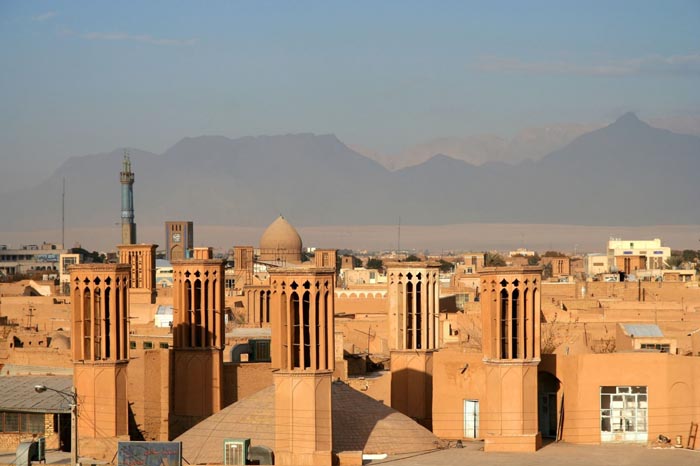
Iran is also a place associated with pure bred Arabian horses. For many years the breeders and enthusiasts of this breed have been importing Arabian horses from many corners of the globe, mainly from Europe and the United States. The amount of the breed’s supporters is growing at an extremely shocking rate. Each year the number of shows in Iran is increasing, both those affiliated by ECAHO and regional ones. You can also find shows organized for Iranian horses bred in purity, called Asil horses. Iranian breeders believe that the modern Arabian horse is a direct descendant of these horses, bred for thousands of years in the kingdom of Iran, called by locals the Iranian Empra.
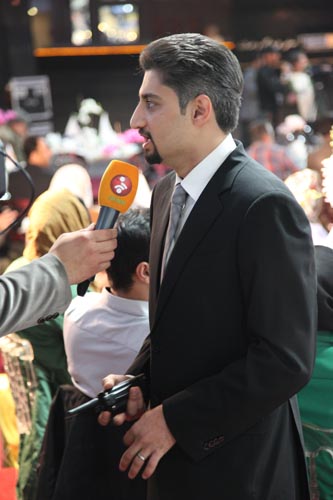
Fariborz Vadipoor is the main organizational drive behind the Arabian Stallion Show. The Vadipoor family, as one of the first in Iran’s history, imported private Arabian horses. On the 22nd of January the newly formed organization called Iran Arabian Horse Event (IAHE) organized a prestigious and the first of its kind show of chief sires, currently stabled in the country. IAHE’s vision is based on a sentence from the great Zoroastrian Iranian prophet, who says: „to fight the darkness I don’t pull a sword, I fire a light”. The concept behind the endeavor was to help breeders in choosing a sire for their mares. The event’s aim was also to gather the largest number of known sires in one place, during one evening. As the organizers state on their website, „the IAHE believes that the promotion of Arabian horses in a country with such a potential as Iran needs a strong management with a high level of skill and experience. If we are expecting the horse industry to make a strong financial impact on the economy of Iran we need to first gain experience and fly with wings of courage and wisdom”.
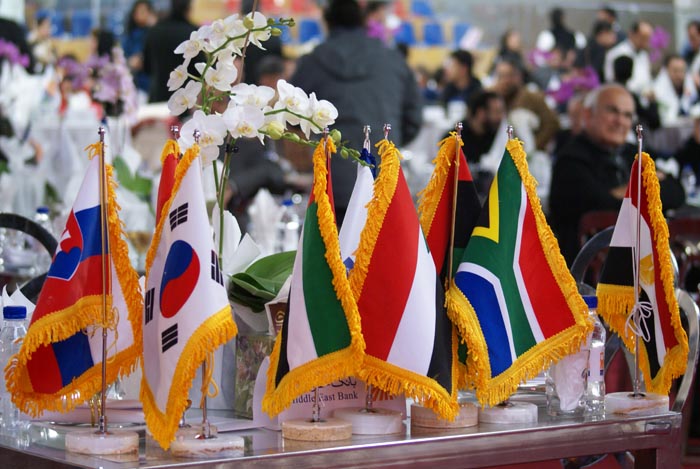
And so we witnessed an exclusive event during which breeders and invited guests, not associated with Arabian horses until now, could compare various stallions, different in terms of pedigrees, quality and achievements. The event’s supporting organizers were: the Equestrian Federation of I.R.Iran, Mehrgan Asil Horse Foundation and Al Shams Arabians, whereas the main sponsor was the Middle East Bank. That evening, the Dasht-e Behesht Horse Events Hall in Karaj in Alborz Province, just several hours drive north-west from Teheran, welcomed several hundred guests from Iran and abroad, among them many foreign ambassadors to Iran.
Luxury from top to bottom
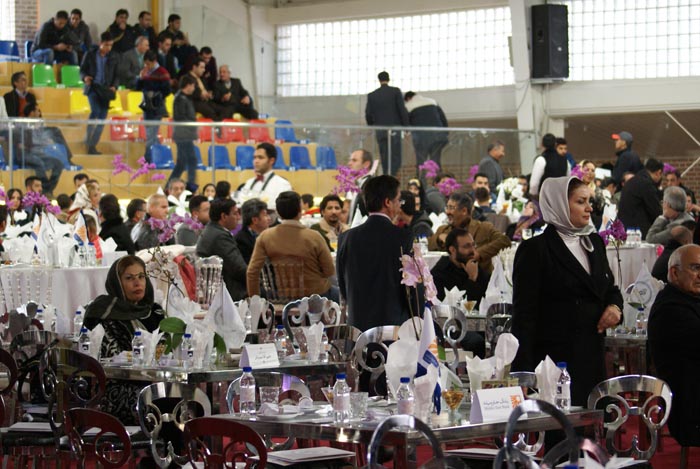
All participants received an elegantly printed catalog with 14 stallions presented that evening, where each of them was showcased on two pages of the publication. It wasn’t my first time in Iran and I can boldly say that the 2015 IAHE Arabian Stallion Show was the most professional and grandest event that I had the chance to participate in Iran so far. The stallions were presented in a large indoor arena, in an equestrian center of world class standards, owned by Ali Hojabr, known for organizing important equestrian events in Iran, but also an enthusiast and owner of Arabian horses, as well as the head of the Hanoverian Association in Iran, which brings together breeders of sport horses of foreign breeds.
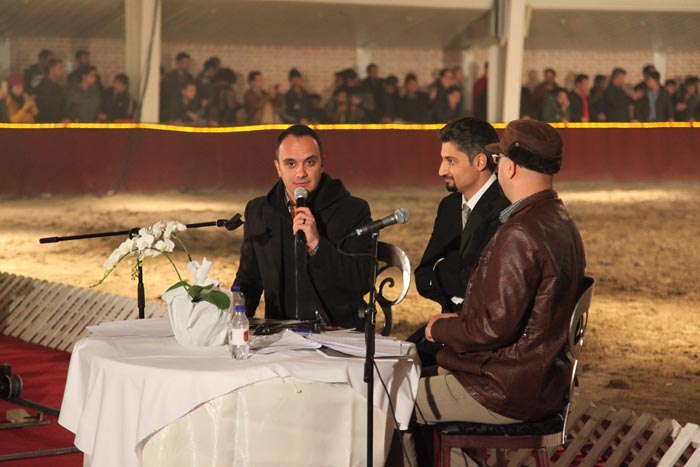
We followed the performances of horses to wonderfully chosen music, moody lighting and among a friendly and almost family atmosphere. The play of lights and music caused each stallion, which emerged from among fake smoke and trotted onto the arena, to appear as though an ethereal, fairy-like creature. The presentation was carried out in two languages by three people – the main organizer and initiator, Fariborz Vadipoor and two known television presenters, Mohammad Bahrani and Ehsan Karami. Due to the size of the indoor arena and presence of many cameras (also for the needs of a livestream broadcast), the guests could also observe the show on a large LED screen in the VIP sector. Quite surprising was the large number of photo reporters and journalists, both from leading Iranian media and international publications. Seated at the VIP tables were many famous stars, known not only in Iran – sportsmen, writers, artists, musicians, filmmakers, politicians, businessmen, owners of the largest factories in the country, leading sports clubs, banks, publishing houses. For the first time in the history of such events in Iran so many known people were in attendance. They were drawn here by curiosity and a chance for new business contacts. During the many hour long presentation the guests feasted on tasty appetizers and plenty of sweet
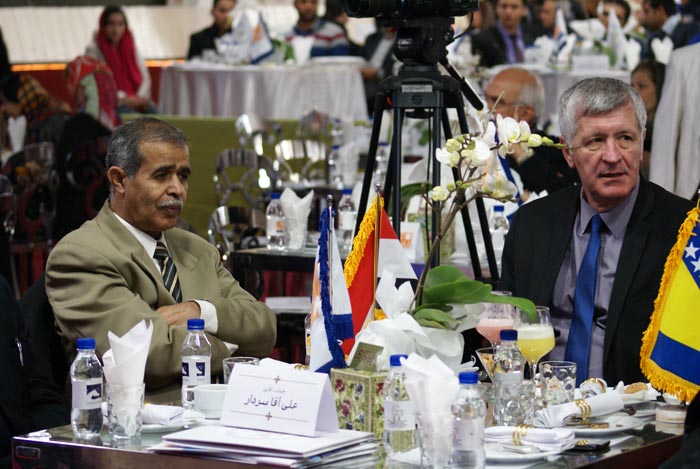
treats. I was surprised by the attires of the guests. They were dressed extremely elegantly – men in suits and ties, women in beautiful shawls, sparkling wraps and high heels. All this emphasized the significance of the event. Luxurious cars parked alongside the indoor arena and the path to the entrance led over a red carpet. It seems that many organizers of European shows with much larger budgets than IAHE, could be inspired by the Arabian Stallion Show in the Alborz Province.
Fourteen stars
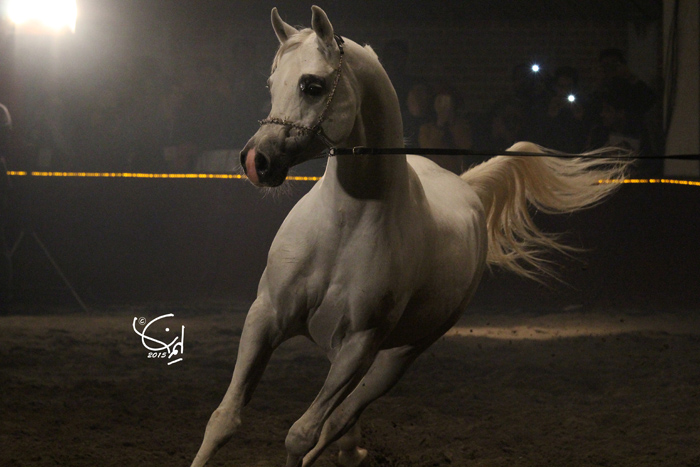
That evening we admired such stallions as the bred in Italy by El Paradiso Stud and owned by Sotoudeh Gold Company from the Yazd Province, Amir Ashiraf (WH Justice – Guendalina/Valentyno APS). This born in 2004 milky white stallion with an exotic head is definitely one of the most known representatives of this breed in Iran and his import into the country was spoken far and among. The next stallion was the bay BF Coco Junior, the born in Belgium son of the mare Evershama by Warandes Pascha and the US-bred stallion Psytadel, whose blood is extremely valued and coveted in Iran. The international champion from shows in Belgium, Holland and France is currently owned by Mohammad Askarshani.
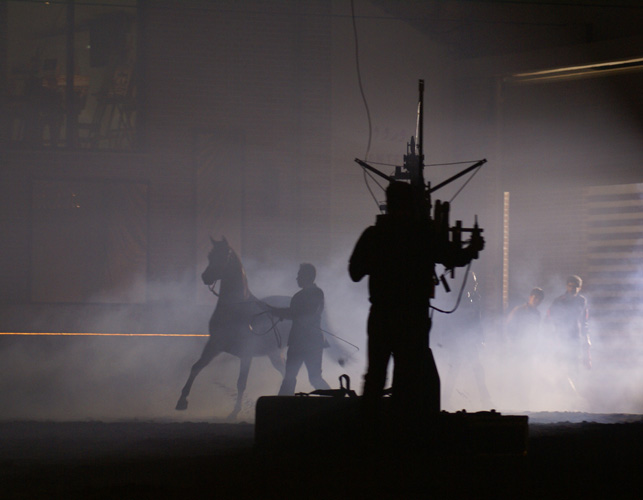
Next on the arena we saw the young, just 5 year old, grey Emanos KA (QR Marc – Emantka/Eukaliptus), bred by Knocke Arabians (Belgium) and owned by Vahid Moslemiani from the Kerman Province. Emanos KA has successfully competed in shows in Europe and the Middle East, among them winning a class and claiming a silver medal in Sharjah. The fourth presented horse was the born in 2005 Emotion (Eternity Ibn Navarrone-D – Praetoria/Kubinec), also known from European arenas. Emotion, bred by Osterhof Stud (Germany), is owned by Ali Ahmad Sotudenia from the Alborz Province.
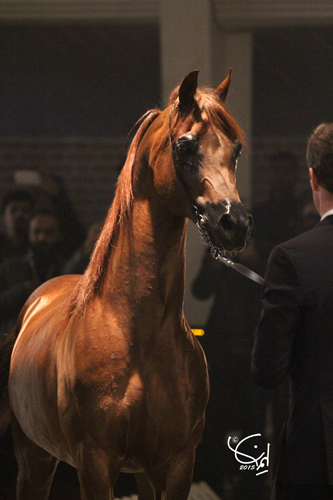
Another presented stallion was well known to the European guests. It was FS Bengali (Kubinec – Om El Sanadiva/Sanadik El Shaklan), bred by Frank Spoenle in Germany. This stallion changed owners several times, after which he was imported from Poland to Iran by Ali Reza Sharif from the Kerman Province. A champion from Scottsdale, a US National Champion from 13 years ago, World Reserve Champion from 1997, All Nations Cup Reserve Champion from 2000, was a true 21 year old senior of the evening. The sixth showcased star was the chestnut US-import and well known there multi-champion Honorrs (Affirmmed – Padrons Contessa/Padron). Born in 2003 in the stud of the Wagamons, he is currently owned by Zohren Soltanabadi of El Shams Arabians. Another stallion to gallop out of the cloud of white smoke was the black HS Alcide (Simeon Sadik – Albula/Fawor), bred at Halsdon Arabians (UK) and owned by Reza Khalaj from the Teheran Province.
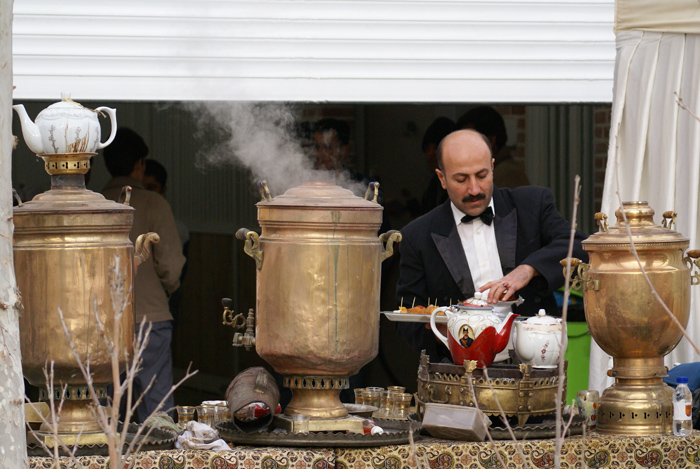
I was personally astonished with the correctness of build and Arabian type of the young, four year old IS Erpo (Gazwan Al Nasser – IS Electra/Emrod) from Ismer Stud and owned by the owner of the hosting facility, Ali Hojabr. The upcoming star, purchased recently by Gerami Nazhad right after claiming the bronze medal at the latest World Championships in Paris, the three year old Kanz Al Nasser (WH Justice – Ftoon Al Shaqab/Al Adeed Al Shaqab) was not available for viewing in Karaj, as he is still stationed in Belgium. The bred by the Qatari Al Nasser Stud stallion is also a 2014 Junior Champion from Sharjah (UAE), a 2013 Junior Champion from Doha (Qatar) and a 2013 Bronze Champion from the All Nations Cup in the yearling colts category.
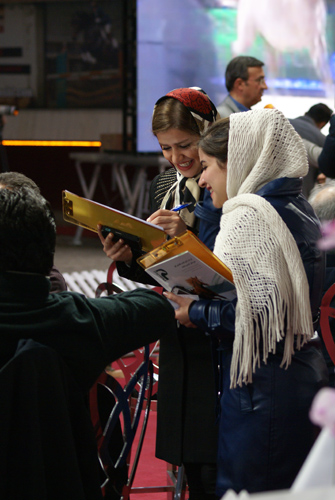
After a short break we could admire the next five representatives of the Arabian breed. Another son of Psytadel – the bay Lord Bey Shah (out of Lady Aphrodite DD/Padrons Psyche), bred in Poland by Minnesota Arabians, was purchased and imported to Iran by the owner of FS Bengali, Ali Reza Sharif. This robust stallion can boast a Top Ten title from the World Championships in Paris in 2008 and Polish National Junior Champion title from that same year. The guests could also take a look at another Polish purchase of the same owner, the bred by Bełżyce Arabians grey stallion New Man (Major – Njuschaah/Santhos), the Best Arabian Racehorse in Poland in 2010.
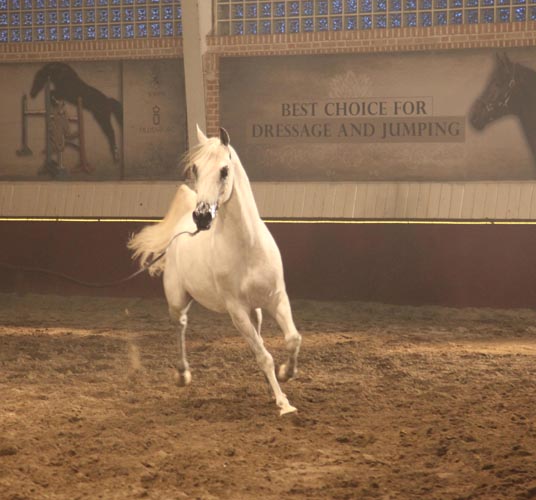
A wonderful performance was given by the son of Khidar and J-J Aqina by Aquilo, the grey Mambo, bred in Belgium by the Goossens family and imported to Iran by the Mambo Partnership. Having worked some time ago in Belgium I had the chance to train this stallion under saddle, so I was the more happy of the outcome of his presentation. A Belgian National Reserve Champion from 2011, he was shown in Iran by Belgian trainer Geert Oben. He was not the only horse in his hands that evening. We also saw S.S Biju Psyche (SW Renegade – Mouna El Masan/Masan), imported in 2010 to Iran by Farzad Shams. This stallion is a multiple medalist from the most important shows in the country. The final stallion was the young, just 5 year old son of Marajj, Tajj (out of Tatjana S by Arastin). Bred by the Dutch Klarenbeek Arabians and owned by Mahdi Entezari, he was an interesting completion of the catalog sire list. Known from European arenas, successfully shown in Iran, he is one of the most recognizable sires in this country.
To touch the star you just need to choose the right place to stand…
A talk with FARIBORZ VADIPOOR, organizer and initiator of the Arabian Stallion Show
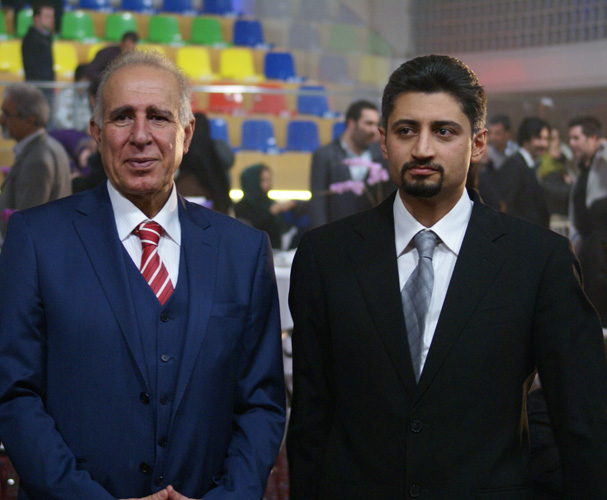
Where did the idea for this event come from?
This is one of the most important miracles of the passion for the Arabian horse, that it gathers so many people from all around the world and unites them together as a family. The passion for the Arabian horse makes it possible to accept people, no matter from where they come from and no matter what language they speak, as a friend. All our events, when you look closer at them, are based on this fact. Shows, ceremonies, open barn days – all have different aims, but the fact of being together is always one of our goals. The IAHE tries to make a new stream in the Arabian horse society of Iran by spreading knowledge and giving motivation. We know the strong and weak points of the Arabian horse society of Iran and one of the very first issues to think about was breeding. The problem of making the best choices to plan the best possible breeding program is the concern of every breeder all around the globe, so it is in Iran. One of the ways to add knowledge to breeding programs is to introduce the stallions with all the needed information about them. So the idea for the event was born.
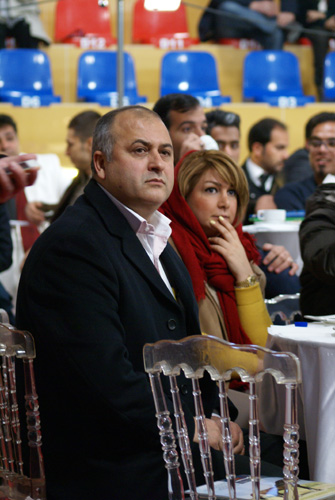
When did your team begin the preparations?
After three years of experience and preparation we knew that the most important thing was to have different but integrated teams operating in different areas of organization. When it comes to working with a big team with a high level of skills there should also be a strong sponsorship supporting the operation. This is the reason for establishing the IAHE Sponsor Club, including strong economical businesses in Iran or abroad. The stallion show was possible as a result of a cooperation with the Middle East Bank and Mr. Ali Agha Sardar who is one of the premier and esteemed members of the IAHE Sponsor Club. And as Persians always say: to touch the star you just need to choose the right place to stand.
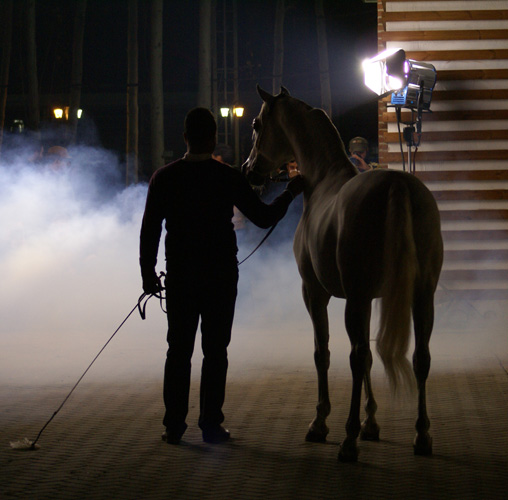
How would you describe the Arabian horse breeding scene in your country?
Arabian horse breeding in Iran is a traditional passion. Iranian people were always breeders of Asil horses, the ancestors of today’s Arabian horses. So today it’s not just a passion, it’s a legacy they should take care of. Over the last four decades the Iranian people had to face difficult situations like 8 years of war and many years later after that they had to somehow stand on their own feet. Fortunately despite the impossible situation there were always some people who took care of this legacy even by sacrificing their blood, life and money. Among these heroes can be mentioned Mary Leila Gharagozlou* who not only protected the breed but also registered Asil horses of Iran in WAHO during the aforementioned difficult time. So breeding has never been easy in Iran but now this has totally changed to a business and has found a place in the country’s economic industry. Many breeders are busy breeding Arabian horses in different areas and we can say that more than 3,000 Arabian horses are being used in breeding programs in Iran today. I’ve been working with European breeders since 2007 and before that with some breeders in the UAE. I feel we have the potential to approach the level of Arabian horse breeding in Europe in volume of investments and knowledge of breeding. But we have some very big problems like the restriction of using artificial insemination from the semen of the stallions who are not in the Iranian Arabian horse studbook and also the quarantine problems which restricts Iranian horses to cross the borders to European or Arabic countries who are under OIE rules. However with the new vision of the new President of Equestrian Federation Dr. Masoud Khalili both of the mentioned problems are to be solved in the close future.
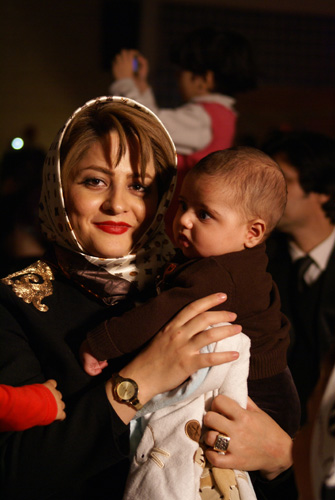
Your family as one of the first have privately imported Arabian horses onto Iranian land.
Me and my brother Farzad started to learn about bloodlines and study the experience of old and new breeders all around the world. From the very beginning we were excited about Russian and Polish bloodlines and we tried to know more about them. Then I had the chance to visit some small, private farms in the UAE as it wasn’t such hard to travel to the UAE in comparison to Europe for Iranian people. We always believed that the Arabian horse resulted from breeding plans in Iran and their relatives abroad have something to complete each other. Iranian horses have the build, the skeleton and powerful legs while others that we could import had the type and elegance that our horses needed. So first of all we started with the studying of bloodlines to see which family could be a better match for Iranian horses and then it was time to bring our thoughts to life. I should say I was lucky that my wife Hoda also loves horses and she is a great help in our activities.
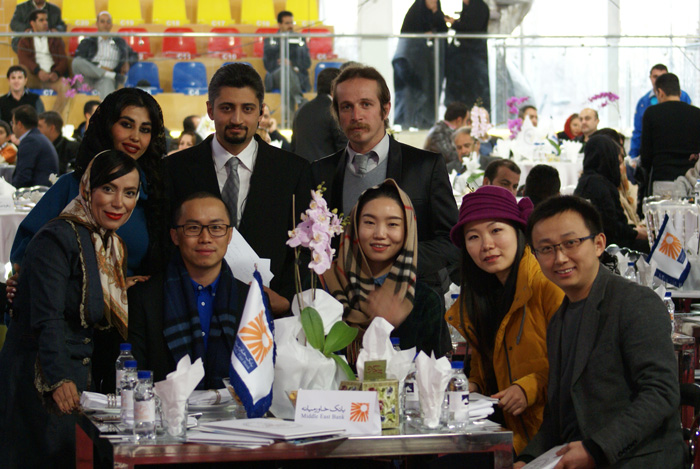
Which of your imports was the most emotional or successful?
So far my family has imported 21 Arabian horses to Iran which for sure I can say all are of high quality and they have (or had) played a very valuable role in Arabian horse breeding programs in Iran. The most important I can say was the import of the stallion El Amin. Those days he was one of the most famous European stallions – World Reserve Champion and All Nations Cup Reserve Junior Champion Stallion (both times behind triple World Champion Marwan Al Shaqab). El Amin also produced many champions, including European junior champion colts, multi A show champions and multi national champions. Unfortunately we lost him very soon. However, in the small period of time in Iran he left high quality foals who are now turning into stallions or broodmares.
Some of the European breeders are worried to sell their own bred horses to Iran because of sentiments and also because they are not sure about the future of their horses.
We have some very professional vets and nutritionists. Our grooms are also professional because most of them are raised with the horses and most of them know horses better than the owners themselves (even like me). Now Iranian breeders have more knowledge and are smarter in keeping their horses and this is the difference. The most important thing is that most of the breeders love their horses and regard them as members of the family.
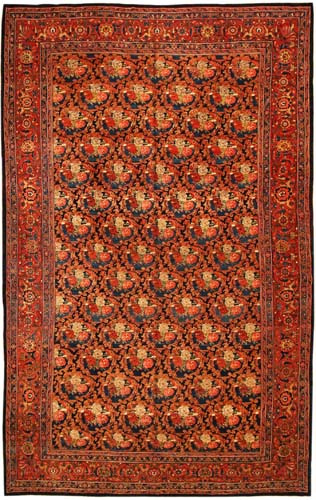
How does the state breeding program look?
Unfortunately at the moment there is no state breeding program since 10 years ago. Before the revolution the royal stables served as the state studs and it was very good. After the revolution everything has changed. After the war the new equestrian office in the capital tried to rebuild the state stud and breed a couple of breeds that the country needed. So they began with Arabian horses, Turkmen horses, Thoroughbreds and some show jumping horses. The very first import of Arabian horses to the studbook was in the era of the royal stables. It was a group of Arabian horses from the United States as a gift from the United State’s president to Iran’s Shah in 1974, including one stallion Agean Rooz and two mares Agean Rosan and Agean Rinuba, all from old Crabbet lines. Then after the revolution in 1992 the new state stud decided to import stallions and mares from different breeds to build a new breeding program. For the Arabian horse breeding program they chose 2 stallions: Ibn Majid, Hakim and one mare: Mamluka from Spain along with a private import Mobarak (a Straight Egyptian stallion by Salaa el Dine, bred by Dr. Nagel, imported by Mary Leila Gharagozlou). After that until the closure of state studs no Arabian horse import is registered in the studbook till the private imports began around 2006.
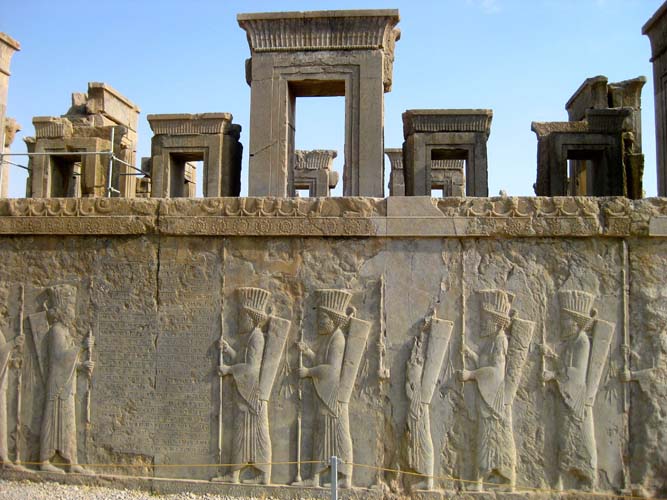
When did Arabian horses started to be bred in Iran?
The Arabian horse breed was born in Iran and I can say it was some thousands of years ago. The ancestors of Arabian horses were Nesaeian horses. They lived for hundreds of years in the south west of Iran where now the Khuzestan Province is, today part of Iraq and Syria. Over centuries the breed was formed as horses of middle size, speedy and intelligent. The studbook was the result of Mary Leila Gharagozlou, who not only introduced Iranian pure Arabian horses called Asils to WAHO, but also sacrificed her life in finding Arabian horses all around the country to register in Iran’s Arabian horse studbook.
Is there any space for flat races or endurance?
Yes, of course there is. We have several race tracks and so many endurance competitions. Asil horses are more likely to be performance heroes and because of that we have very strong Arabian horse races and endurance competitions. There are many enthusiasts of these sports today.
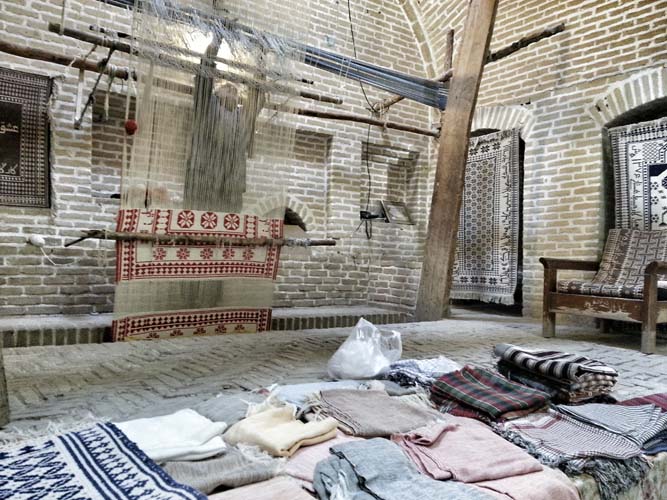
Which of the Arabian horses is the closest to perfection for you?
My ideal horse is my mare who I love to spend time with. I like putting my son on her back and she knows that we trust her to protect our child better than us and I see her answer in her huge black eyes. However she is not such dished in the face, but I still love to see her every day.
What do you think of the regulations saying that after importing the horse to Iran he cannot leave the country?
The problem is caused by quarantine rules. OIE** doesn’t assume Iran as a clean country so the countries who are under OIE rules can’t accept Iranian horses. So the problem is not that our horses can’t leave the borders, but the problem is where can our horses be accepted? Over the last couple of months we have had some optimistic progress. The equestrian federation and veterinary office are now cooperating with the third country to send the horse to a destination. Qatar would accept our horses and the accepted horses could leave Qatar to the final destination after passing 40 days of quarantine in Qatar. This way for the first time Iran’s show jumping national team could attend an international competition in Qatar and fly back to Iran. This is a temporary answer to the main problem and costs are much higher than a simple shipment but at the moment this is the only way.
——————————————-
* Mary Leila Gharagozlou – farmer and horse breeder (1927–2001)
** OIE – World Organisation for Animal Heath
Read also: A slightly raised curtain. Polish horses in Iran


